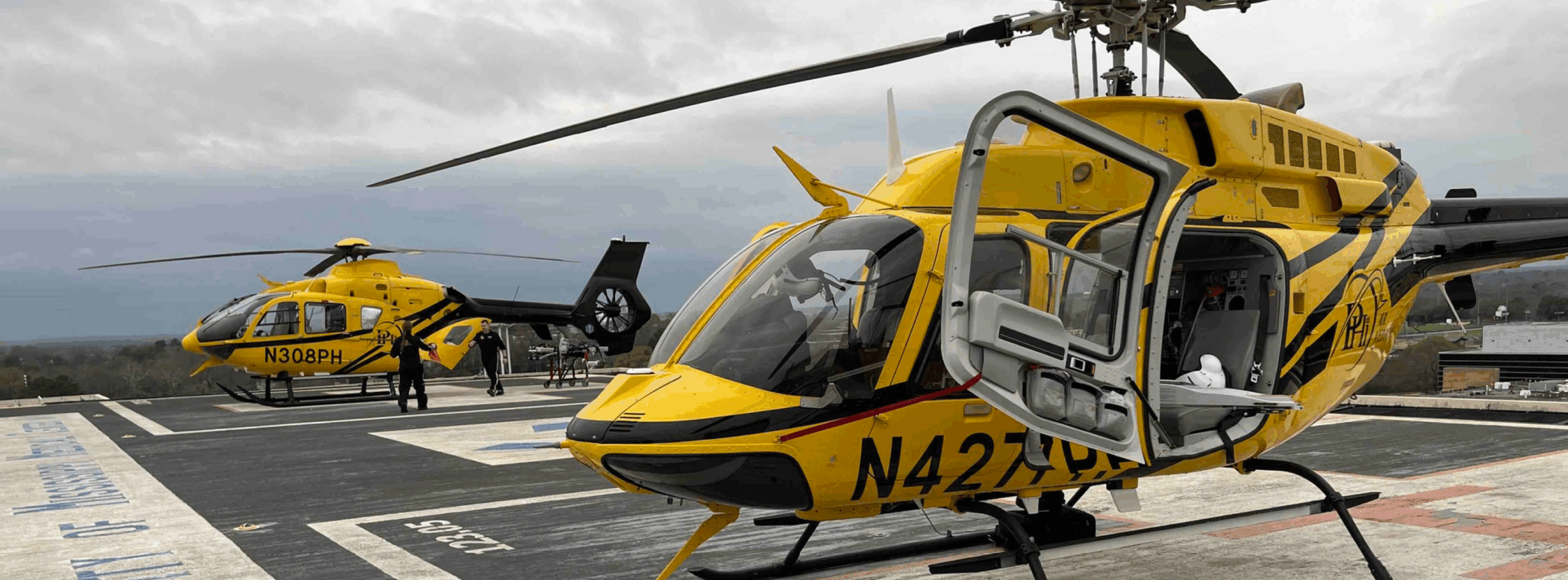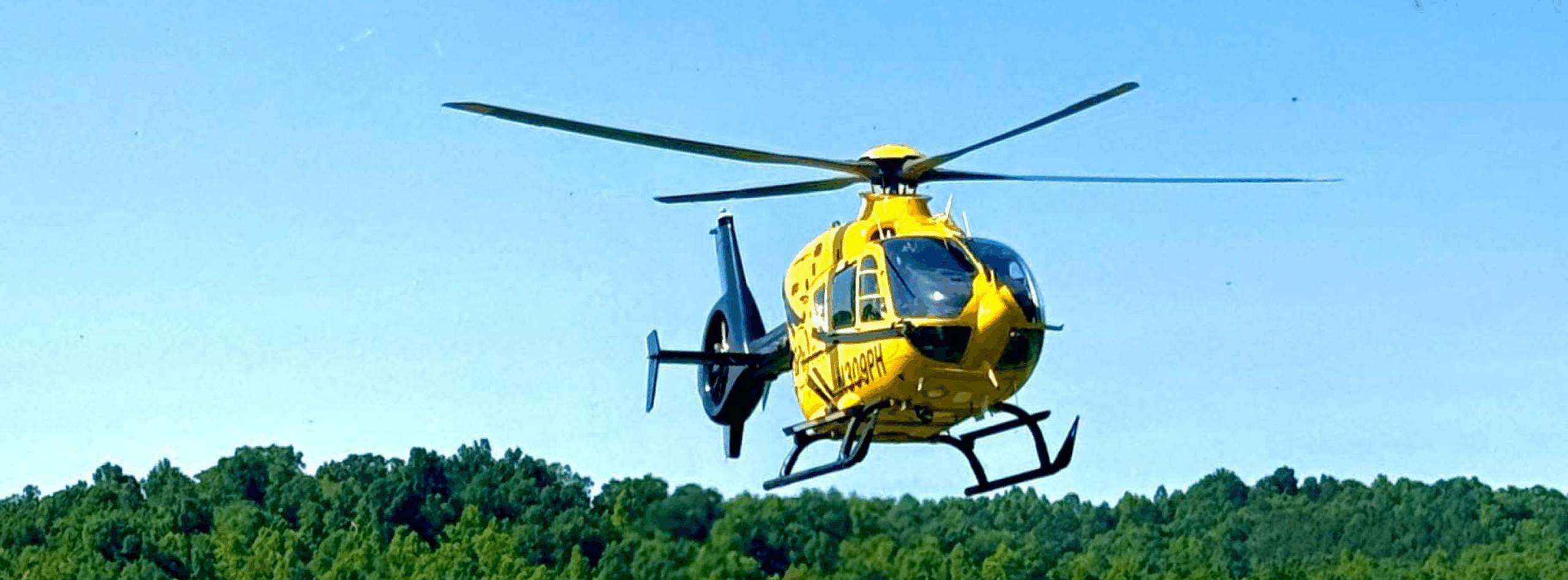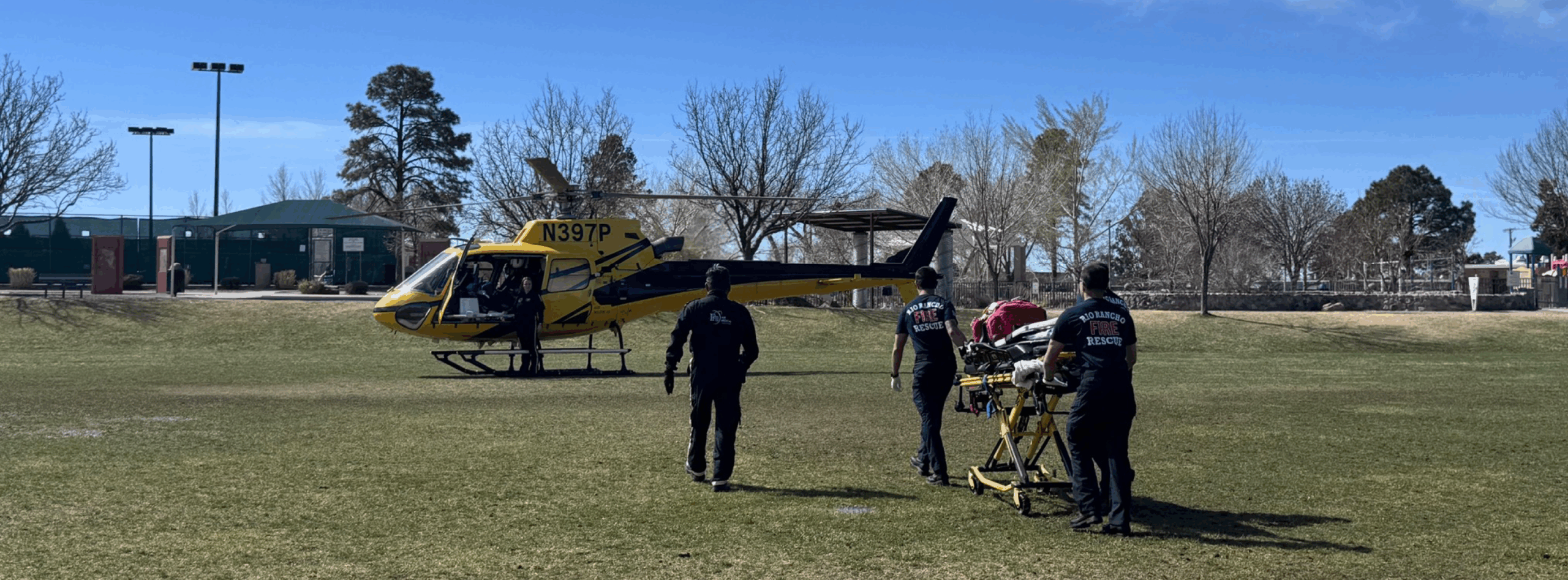How Helicopter Base Locations Support Faster Emergency Response
What Base Placement Means for Communities and How PHI Cares Membership Fits In
When people explore the PHI Cares Coverage Map, the placement of helicopter bases across the country stands out immediately. Each base reflects a long-term decision made to improve access to advanced care. Base locations are selected based on geography, hospital access, travel patterns, community growth, and the relationship between response time and patient outcomes.
This blog explains how base locations are selected, why response time matters, how air ambulance helicopters support both rural and urban regions, and how PHI Cares Membership provides financial protection for medically necessary transports performed by PHI Air Medical.

Why Helicopter Base Location Matters
Helicopters reach patients quickly across long distances, traffic congestion, rugged terrain, and areas with limited roadway access. That advantage only helps when the air ambulance is already positioned in the correct location. Choosing where to place a helicopter base requires evaluating population density, hospital distribution, regional travel barriers, and long-term community growth.
The PHI Cares Coverage Map presents these decisions in a visual format that is easy to understand for households, EMS agencies, hospital partners, and local officials.
Why Response Time Influences Outcome
Response time directly affects how quickly a patient reaches the right level of care. Several major U.S. medical publications have documented this relationship. Each one highlights different parts of the emergency care system.
1. A study published in JAMA on major trauma
A research team examined more than 223,000 adult trauma patients across the United States. The study reported that patients transported by helicopter had higher survival rates compared with those transported by ground EMS. The study also highlighted that helicopters often take patients directly to Level I and Level II trauma centers, which have specialized resources many community hospitals do not offer.
This matters for patients who need advanced trauma surgery, neurosurgical care, or critical care interventions, such as in-flight whole blood transfusions, which many PHI Air Medical aircraft are equipped to provide.
2. A study published in JAMA Surgery on nationwide response times
This national analysis reviewed more than 2.2 million ambulance responses across 2,268 counties. The study found that longer EMS response times were associated with higher mortality rates from motor vehicle crashes in both rural and urban areas.
This supports the idea that when traffic, distance, or roadway barriers slow ground units, a helicopter positioned closer to the community can reduce delays.
3. A study published in Evidence-Based Practice on pediatric trauma
This study found that children who met trauma criteria had improved survival when transported by helicopter compared with ground EMS.
Children often require pediatric trauma centers or operating teams that are not available at every hospital. Helicopter transport helps them reach specialty facilities faster.
Why this matters in real situations
These findings apply to many emergencies, including:
- A patient with a severe head injury who needs neurosurgical care at a Level I trauma center.
- A cardiac patient who requires a catheterization lab that is not available at the nearest hospital.
- A child with internal injuries who needs a pediatric trauma team.
- A burn patient who must be transported to a designated burn center.
- A newborn or high-risk maternity patient needs a specialized neonatal or obstetric unit.
- A patient with significant blood loss who benefits from crews able to perform in-flight whole blood transfusions on aircraft equipped for that level of care.
Helicopter base placement influences how quickly these patients can reach the appropriate facility. The closer the air ambulance is to the community, the shorter the path to definitive care.
How Base Placement Supports Rural Communities
Rural communities often face long distances to advanced hospitals. Roadway networks may be limited, and weather or terrain can add more time to ground response. A helicopter base located near rural regions reduces the time it takes to reach a patient and the time required to transport them to the right hospital.
On the PHI Cares Coverage Map, rural bases often cover multiple counties, including areas where the closest hospital may not be equipped to provide specialty care.
How Base Placement Supports Suburban and Urban Regions
The closest hospital is not always the correct hospital for a serious medical emergency. Many patients require a facility with a higher level of specialty care, such as a trauma center, cardiac center, stroke program, burn unit, pediatric trauma team, neonatal intensive care unit, or advanced obstetric services. These facilities are not evenly distributed across cities and metro regions.
Suburban and urban areas also deal with significant delays on the ground. Traffic congestion, multilane interchanges, construction zones, limited direct routes, and crowded emergency departments can slow ground response even when hospitals appear close by on a map.
Helicopters bypass these barriers. They move patients directly to the facility best equipped to treat their condition, not just the nearest building with an emergency department. This saves time when ground units are delayed by congestion or when the distance to the appropriate specialty center is longer than the distance to the nearest hospital.
The study published in JAMA Surgery reinforces this need. Longer EMS response times were linked with higher mortality in both rural and urban counties. In dense areas where roadway delays are common, helicopter access can help stabilize response times and reduce time to advanced care.
The PHI Cares Coverage Map illustrates the positioning of base locations near major corridors and medical hubs, supporting these scenarios and providing a reliable regional response footprint.
How Aircraft and Crews Support Their Regions
After a base is established, the aircraft and crew follow a steady readiness cycle. The helicopter is maintained, fueled, and prepared for dispatch. Crews remain on site unless returning from missions, training, or completing essential tasks. This supports rapid response across the region.
The PHI Cares Coverage Map shows the projected reach of each base so households can better understand how they are supported.
How PHI Cares Membership Fits Into This System
PHI Cares Membership provides households with financial protection when medically necessary transport is performed by PHI Air Medical. Medical necessity is determined at the time of the request by the clinicians, first responders, or medical personnel who authorize the helicopter and request it for the patient. When those professionals determine that a helicopter is needed for the patient and PHI Air Medical performs the transport, PHI Cares Members do not receive a transport bill from PHI Air Medical.
The program is designed to reduce the financial burden during an already stressful medical event. It applies to every eligible household member included under the membership. It provides clarity about what happens financially if a PHI Air Medical aircraft transports the patient during a medically necessary situation.
Members can review the PHI Air Medical footprint on the PHI Cares Coverage Map to understand where aircraft are based and which regions are supported. The Membership Page provides detailed information about what is included for each household.
Frequently Asked Questions
How are helicopter base locations chosen?
Base locations are selected by evaluating geography, hospital access, travel barriers, population density, and long-term community growth. The goal is to place aircraft where they can reduce response and transport time.
Why is response time so important?
U.S. medical research has shown that shorter prehospital time supports better outcomes in trauma, cardiac events, strokes, pediatric emergencies, and other time-sensitive conditions. Faster access to the correct level of care matters.
Why is the closest hospital not always the right hospital?
Some emergencies need specialty care found only at designated centers such as Level I or Level II trauma centers, cardiac catheterization labs, burn centers, neonatal units, or pediatric trauma teams. Helicopters take patients directly to the facility best equipped to treat their condition.
How do helicopters support regions where ground response is slow?
Rural areas often rely on two-lane roads, limited passing zones, and long travel distances. Urban regions often struggle with traffic congestion and overcrowded road systems. Helicopters bypass these delays and reach the right hospital faster.
How does PHI Cares Membership support households?
PHI Cares Membership provides financial protection when PHI Air Medical performs a medically necessary transport. When medical professionals request the helicopter for the patient and PHI Air Medical completes the transport, members do not receive a transport bill from PHI Air Medical.
Sources
- Galvagno et al. “Association Between Helicopter and Ground EMS and Survival for Adults With Major Trauma.” JAMA. 2012. https://jamanetwork.com/journals/jama/fullarticle/1148152
- Byrne et al. “Association Between EMS Response Time and Motor Vehicle Crash Mortality in the United States.” JAMA Surgery. 2019. https://jamanetwork.com/journals/jamasurgery/fullarticle/2723267
- Stewart et al. “Does Transport by Helicopter Compared With Ground EMS Improve Outcomes in Pediatric Trauma.” Evidence-Based Practice. 2019. https://journals.lww.com/ebp/fulltext/2019/10000/does_transport_by_helicopter_compared_with_ground.15.aspx



